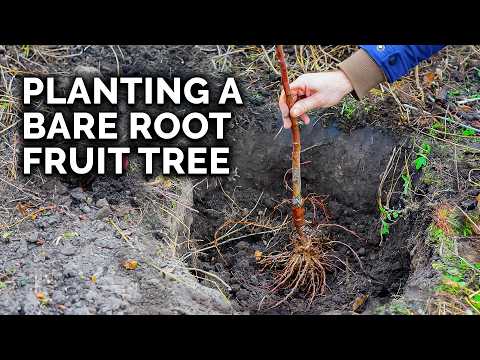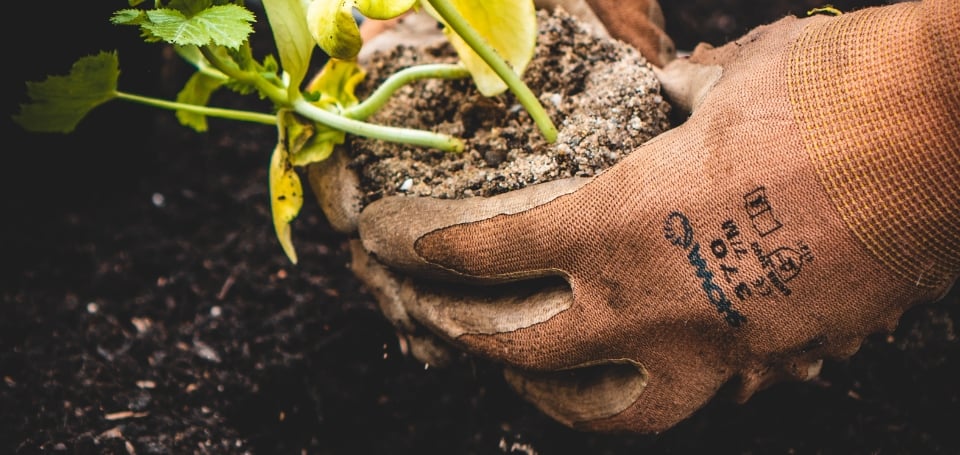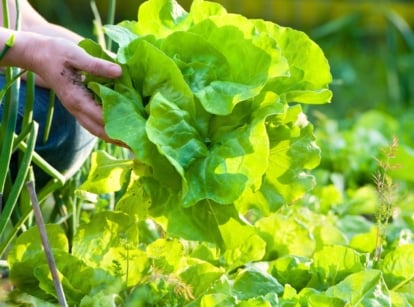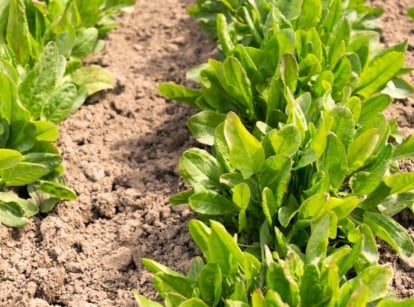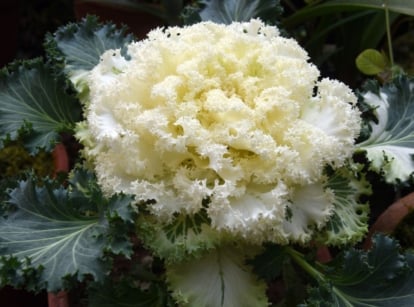How to Plant, Grow, and Care for Romanesco Broccoli
Have you seen a vegetable that demonstrates fractal geometry at its finest? Romanesco broccoli is not only cool to look at, it’s easy to grow and delicious. In this article, plant expert Matt Dursum shows you how to plant, grow, and care for this unique Brassica.
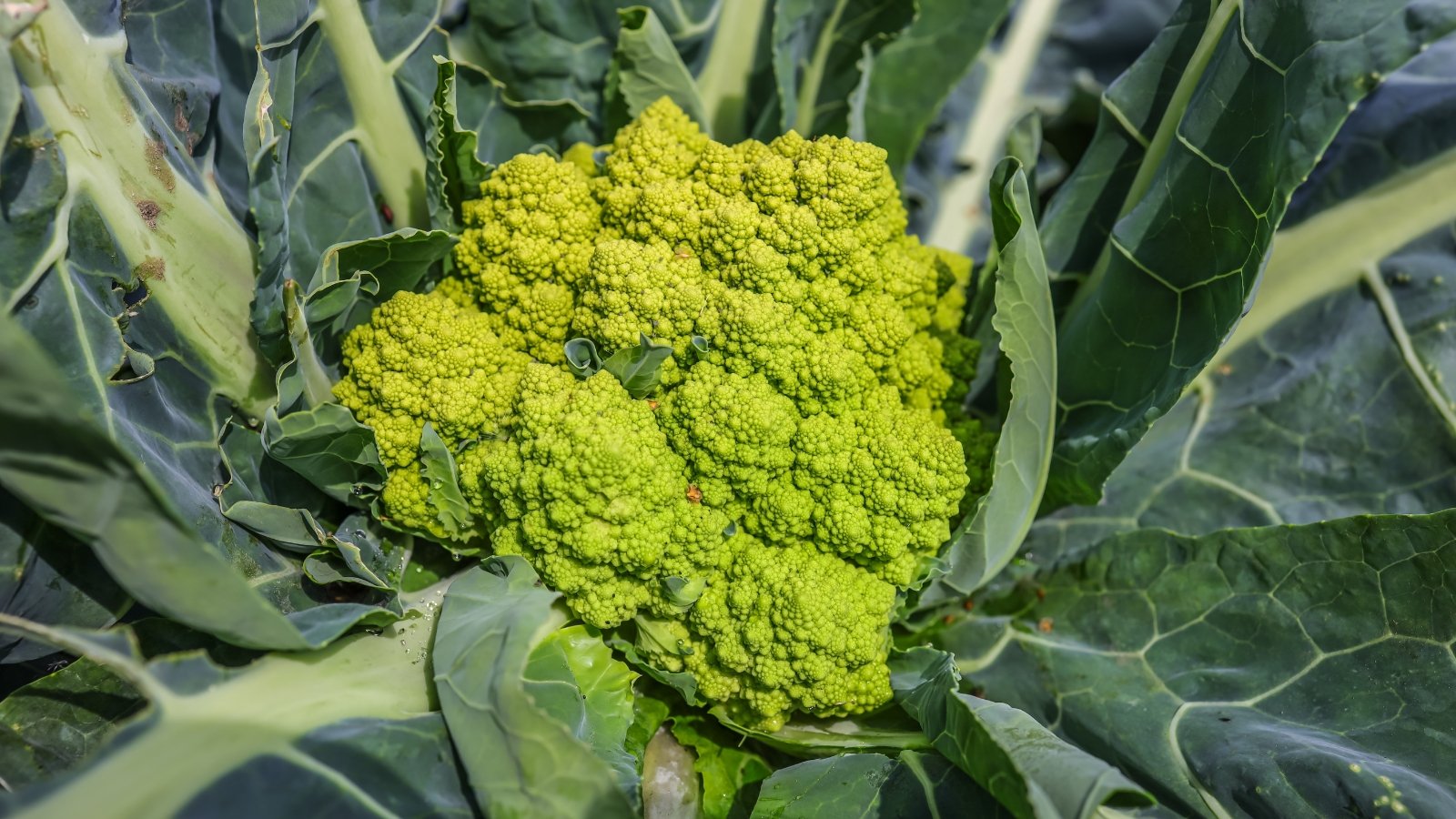
Contents
If you’ve ever been to the farmers’ market, you’ve probably seen a broccoli-like vegetable that can only be described as ‘trippy. ’ The psychedelic romanesco broccoli is also known as Romanesque cauliflower. It’s bright chartreuse and has fractal spirals of flower buds radiating through the flower head.
It’s a cultivar of Brassica oleracea, which includes common broccoli and cauliflower. Instead of producing typical-looking clusters of flowers, this Brassica forms stunning fractals that spiral logarithmically.
Besides looking cool, it’s also quite delicious and nutritious. It’s full of vitamins and minerals and dietary fiber. It tastes slightly sweet and nutty, with a hint of cauliflower flavor.
If you’re looking for an unusual yet versatile vegetable to grow this year, try planting Romanesco broccoli. It’s easy to grow, even if you’re a novice gardener. Let’s find out more about this fantastic vegetable below.
Romanesco Cauliflower Seeds
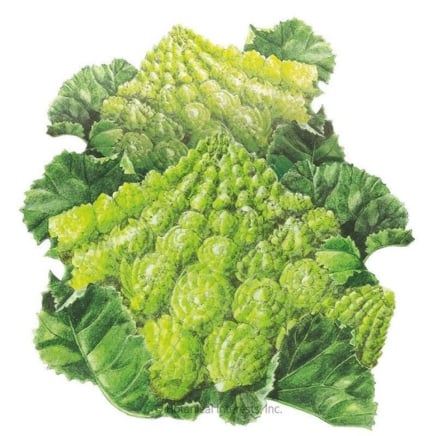
Cooked, ‘Romanesco’ has a delicious nutty flavor and a texture similar to cauliflower. Easier to grow for fall harvest as a warm spring may delay heads until fall.
Brassica oleracea ‘Romanesco’ Broccoli Overview
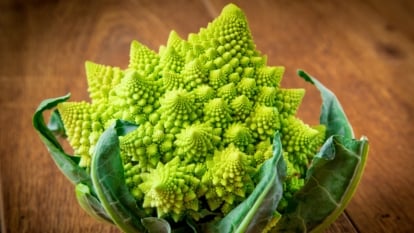
|
Plant Type
Vegetable
Family
Brassicaceae
Genus
Brassica
Species
Brassica oleracea ‘Romanesco’
|
Native Area
Italy
Exposure
Full sun
Height
Up to 36”
Watering Requirements
High
|
Pests & Diseases
Aphids, cabbage worms, cabbage loopers, flea beetles, club rot, black rot
Maintenance
Low
Soil Type
Well-drained, nutrient-rich, and slightly alkaline
Hardiness Zone
3-10
|
What Is It?

Romanesco broccoli is an Italian vegetable with mind-bending fractal leaf designs. The buds form clusters around branched meristems that radiate out in self-similar patterns. Each flower spirals from the head in a Fibonacci sequence. The mathematician Leonardo Fibonacci first recognized the pattern in nature in the 13th century.
A recent study found that before becoming flowers, the buds keep producing stems instead. Each stem produces more flower buds until the head of a Romanesco broccoli forms. This Italian variety produces buds more rapidly as it grows, creating a spiral pattern.
Today, farmers and gardeners around the country are growing this unique vegetable. Many chefs and home cooks use it as an eye-catching and nutritious ingredient. Each head is packed with vitamins C, K, B, and fiber. It also contains the rare and brain-healthy compound called choline.
Characteristics

This beautiful relative of broccoli and cauliflower is chartreuse green and oddly shaped. Each head can weigh up to 5 pounds.
It produces dark greenish leaves with a slight blue hue, similar to broccoli. In its early stages of growth, it’s hard to tell it apart from its cousins.
It has a slightly sweeter and nuttier flavor than cauliflower. It softens when cooked and has a nice crunchy texture when eaten raw. Use it as a main ingredient for vegetable tempura or in salads, stir-fries, and soups. It’s also a great way to decorate your plate in psychedelic patterns.
Native Area

Gardeners around Rome cultivated this heirloom Brassica, likely starting in the 15th or 16th centuries. The vegetable remained popular in central Italy until it slowly gained popularity in the rest of Europe and the US.
It appeared in gardening books and culinary texts throughout the 17th and 18th centuries. The first records of it in the US came in the 19th and 20th centuries.
Today, it grows around the world as a novelty vegetable and ingredient. You’ll find it in farmers’ markets and specialty grocery stores. If you can grow cauliflower or broccoli in your garden, you can grow this beautiful vegetable without problems.
Planting

Like its cousins broccoli and cauliflower, you’ll have no problems planting Romanesco broccoli. It thrives in containers or garden beds with very little maintenance needed. All you need to grow these cool-looking plants is plenty of sun and well-drained soil.
Once your seedlings are started, it’s super easy to get this vegetable in the ground. Plant your seedlings when they’re 4 to 6 inches high.
Like other vegetables, try planting your Romanesco plants in succession. Successive planting is when you plant the same seeds at different intervals throughout the year. This lets you continuously harvest your crops throughout the year.
Start in spring by planting your first crop. Seed a new batch of seedlings indoors every 2 to 4 weeks. Once you harvest your first crop, you’re second crop will be growing strong. In regions with warmer winters, you can start your seeds in the fall for a winter crop.
Transplanting

Once your seedlings are large enough or you have bought starters, it’s time to transplant them. Harden them off slowly over the course of a week to get them accustomed to the outdoors. You can do this under row covers or by moving their containers. This will prevent transplant shock when you move them to your garden beds.
Dig a hole that’s slightly larger than your seedling’s root ball. Carefully remove your plants from their containers and place them in their holes. Make sure they’re spaced around 18 to 24 inches apart.
Water your new transplants well to keep the soil moist. Look for signs of transplant shock. They should put on new growth quickly.
Growing From Seed

Start your seeds indoors roughly 4 to 6 weeks before your usual last frost. To get this date, check the Old Farmers’ Almanac website and enter your zip code. The date shown is when you can expect the last frost to hit your area. Start another succession of starter trays every 2 to 4 weeks afterward. Those in areas with mild winters can plant a fall crop 12 weeks before the first frost.
Plant your seeds ¼ of an inch deep. Group them by 3 seeds per 24 inches. When your plants are up to 2 inches tall, thin them to 1 plant every 2 feet. You should see your seedlings emerge after 8 to 10 days.
How to Grow

As mentioned above, Romanesco broccoli is easy to grow. It’s one of the best crops to grow in succession and pairs nicely with other cruciferous vegetables. It works in containers such as these or in your garden bed.
These plants thrive in temperatures between 60 and 80°F (16-27°C). If you live in a hot climate, try starting them early in the season and late in the season. In cooler regions, you can grow them all summer long.
Light

Plant your seedlings in an area with tons of bright sunlight. Like other Brassica varieties, they can handle some shade. However, they won’t produce the big and radiant heads you’re looking for.
Aim for over 6 to 8 hours of direct sunlight. In areas with hot summers, having a brief respite with afternoon shade helps. A brief cover of branches from a nearby tree works.
Water

Give your plants plenty of water throughout the growing season. Use an irrigation hose or drip line in your garden beds. If you don’t have one installed, water carefully around the bases of your plants. This will prevent any diseases from building up on soggy leaves or mildew on the heads.
Water in the morning so the moisture doesn’t evaporate immediately. You can use mulch around the bases of your plants to seal in moisture. This will help preserve a moist environment for the roots to grow.
Soil

Plant your Romanesco broccoli plants in well-drained soil that’s full of organic material. Use a soil testing kit like this one to get the pH of your soil. This variety prefers slightly alkaline soil between 6.0 and 7.5 pH.
Amend your beds or containers with organic compost to increase your soil’s nutrient content. This will help improve the soil structure and give your plants the extra energy they need to produce their delicious heads.
Temperature and Humidity

Like broccoli or cauliflower, this variety of Brassica doesn’t like to grow in super cold or super hot environments. The sweet spot is between 55 and 75°F (13-24°C). In many areas of the country, this is hard to guarantee, especially in inland areas.
To help your crops during hot days, try using shade cloths. Find a cloth that provides 30% coverage. The cloths reduce solar radiation and heat buildup around your plants. When it rains, the rain passes through the cloth which keeps it from evaporating immediately.
In the winter, mature plants will handle temperatures down to freezing. However, young seedlings will have trouble growing in anything below 50°F (10°C). Protect your plants from frost by bringing them in or using cold frames on the coldest days.
Fertilizing

If you think it’s easy for these plants to produce their trippy patterns, think again! These vegetables are heavy feeders and need the extra nutrients to produce their mathematically inspiring heads.
I prefer using a liquid fish emulsion or other fish fertilizer. It provides all the nutrients the plants need and is easy to find and gentle on my garden.
Apply your fertilizer every 2 to 3 weeks or as directed on the packaging. Watch for signs of overfeeding and reduce if needed.
Maintenance

This vegetable is very easy to maintain. It doesn’t require the self-wrapping or tying methods of blanching that cauliflower needs. Watch for signs of diseases and pests, and keep your plants out of high heat. This should be enough care to grow these wonderful vegetables.
Propagation

Romanesco broccoli is propagated like other members of the Brassicaceae Family of plants. The easiest way is to start your seeds indoors. You can also directly sow your seeds outdoors but this isn’t recommended for this heirloom crop.
You can purchase seeds online or at your local nursery. They may be hard to find in some smaller nurseries. Look for seed packets that are good quality, undamaged, and under a year old.
Most gardeners grow this crop as an annual. In some areas, you may be able to grow them as biennial crops.
If you want to harvest their seeds, let them grow into mature flowers past the edible stage. They’ll produce seed pods similar to cauliflower and broccoli. Harvest the seed pods and dry them before planting the following season.
Harvesting and Storage

Harvest your heads by using disinfected shears or pruners. Wait until they’re firm and have multiple dense flower buds radiating from the center.
Take your heads in the morning when the plants are full of moisture. Romanesco usually won’t produce side shoots like broccoli, so one harvest is often all you’ll get.
Store them in the fridge for up to a week. You can also pickle them, freeze them, or dehydrate them to make vegetable powder for seasoning soup stocks.
Common Problems

The biggest growing problem you’ll face is related to temperature. You’ll need consistent sunlight and mellower temperatures to grow them.
Watch for signs of stress caused by temperature swings. Use cold frames if the temperatures are too low or shade cloths if you’re experiencing high heat.
Pests

These plants suffer from infestations like their Brassica cousins. To prevent pests from destroying your harvests, encourage beneficial insects to live in your garden. If you have ladybugs, wasps, and small birds in your area, you’ll have a better shot at keeping these critters at bay.
In many gardens, flea beetles and cabbage worms can be the biggest nuisance. The best way to keep these insects off your plants is by laying a row cover over your seedlings. Do this during planting, and you shouldn’t have to worry about these pests for the rest of the year. Bt is a good follow-up for caterpillars.
Aphids are another pest to watch out for. They’ll drain your plants of their sap and leave them looking weak and damaged. Fortunately, by keeping a healthy ecosystem, you can prevent aphids from ever setting up shop. If an infestation becomes out of control, try spraying your plants with water, pruning away foliage, or using an organic neem oil solution.
Diseases

Watch out for rots like club root and black rot. These diseases occur in overly watered soil and foliage.
Black rot is a bacterial infection that creates ugly yellow spots on the leaves. If the disease gets worse, the leaves will turn brown and eventually fall off. Club root is a disease in the soil. This can be fatal to your plants and unfortunately, there’s no cure.
Prevent both of these diseases by practicing crop rotation and watering properly. Water in the morning and never get moisture on the leaves or heads. Give your plants plenty of space to grow to allow aeration.
Frequently Asked Questions
Is Romanesco broccoli natural?
Yes! Technically, gardeners centuries ago selectively bred the vegetable for its unique traits. These mutations became more common over time, leaving gardeners with this healthy new variety.
How do I cook Romanesco broccoli?
Romanesco broccoli is a wonderful ingredient in soups, stir-fries, tempura, and salads. Substitute it in any of your broccoli or cauliflower dishes and enjoy!
Are Romanesco leaves edible?
Absolutely! Romanesco leaves are perfectly safe to eat. They’re full of nutrients and flavor. Cook them like collard greens or add them to soups and stews.

